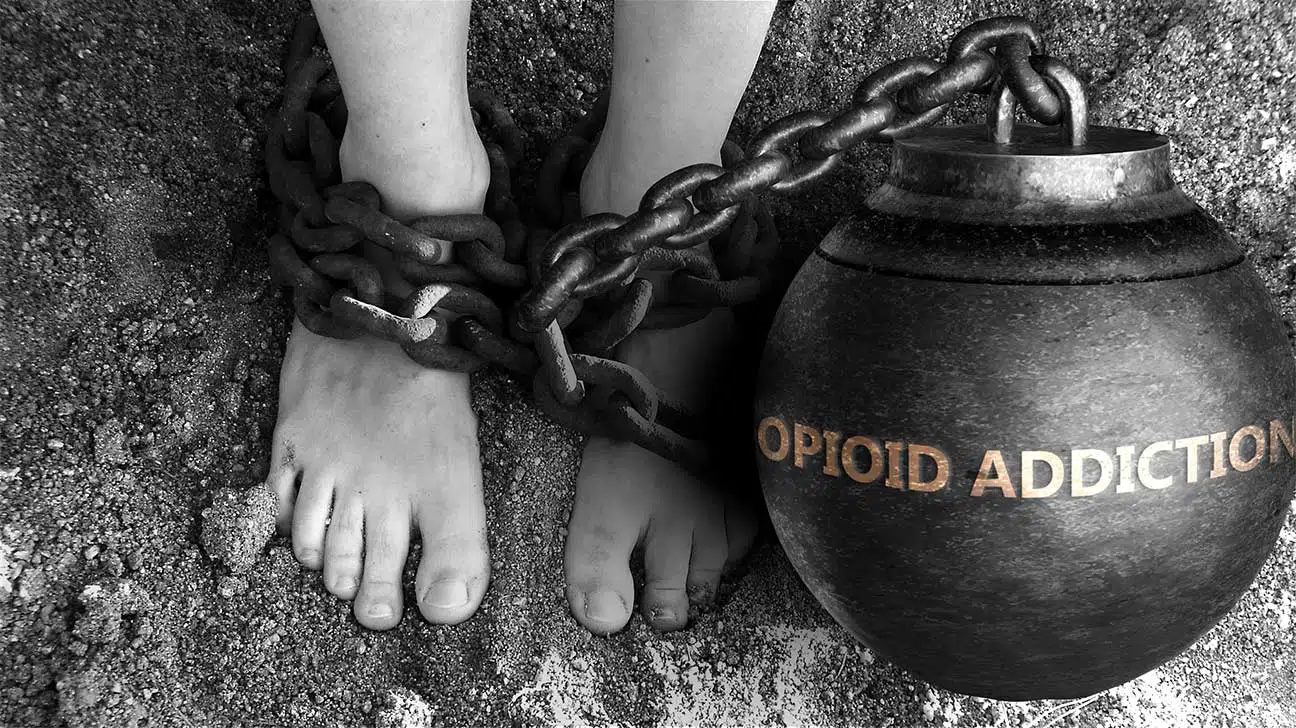
Across the United States, millions of Americans feel the effects of the U.S. opioid epidemic, and a drug overdose crisis fueled by illicit forms of fentanyl – a powerful, synthetic opioid.
Opioid addiction is one of the most serious public health emergencies of our time. In 2020, over 92,000 Americans lost their lives to drug overdose. And overdose death rates are continuing to climb.
Addiction to prescription opioids and illicit drugs such as heroin affects a significant number of Americans. Here is a look at where this occurs at the highest rates.
Top 10 States With Highest Rates Of Opioid Drug Addiction
According to data from the annual National Survey on Drug Use and Health (NSDUH), about 2.7 million Americans – or one percent of Americans aged 12 and older – have opioid use disorder.
Based on the most recent health statistics available, here are the 10 states with the highest rates of opioid addiction in the United States, according to data from the Kaiser Foundation:
1. District of Columbia (D.C.)
An estimated 1.8 percent of D.C. residents, or roughly 11,000 people aged 12 and older, have opioid use disorder.
2. Kentucky
Approximately 1.5 percent of Kentucky residents, or about 55,000 people, have past-year opioid use disorders.
3. Ohio
An estimated 1.5 percent, or 153,000 Ohio residents aged 12 and older, have opioid addiction or abuse issues.
4. Delaware
About 1.3 percent, or 10,000 Delaware residents aged 12 and older, have an opioid drug addiction.
5. Maine
Approximately 1.3 percent of Maine residents, or 15,000 people aged 12 and older, have an opioid use disorder.
6. Vermont
An estimated 1.3 percent of Vermont residents, or 7,000 people aged 12 and older, have an opioid drug addiction.
7. Alabama
About 44,000 Alabamanians, or 1.1 percent of the state’s residents aged 12 and older, have a past-year opioid use disorder.
8. North Dakota
Approximately 7,000 people, or 1.1 percent of North Dakota residents aged 12 and older, have opioid drug abuse issues.
9. Montana
An estimated 9,000 Montana residents, or one percent of the state’s population aged 12 and older have an opioid addiction.
10. Florida
About 169,000, or 0.9 percent of Floridians aged 12 and older, have a past-year opioid use disorder.
Where Does Information On Opioid Addiction Rates Come From?
U.S. federal health agencies, such as the Substance Abuse and Mental Health Services Administration (SAMSA), track and compile data on drug and alcohol abuse rates.
Nonprofit organizations like the Kaiser Family Foundation collect and analyze this data to present to the general public, as well as lawmakers, researchers, and healthcare professionals.
This information can help inform policy decisions, community-based approaches to addiction, and enhance public awareness of the scope of mental health and substance use disorders.
Understanding The Problem: Opioid Abuse And Addiction
Opioid use disorder and opioid addiction are terms commonly used to describe a prevalent issue affecting Americans and their families. Here’s what to know about opioid addiction in the U.S.
What Is Opioid Use Disorder?
Opioid use disorder is the clinical term, or diagnosis, for opioid abuse and addiction. This includes addiction to prescription drugs, as well as illicit opioids like heroin.
Is Opioid Use Disorder The Same As Addiction?
Both terms are often used interchangeably. Although they may not be the same in all cases.
To be diagnosed by a healthcare provider with substance use disorder, you must meet certain criteria outlined in the DSM-5, or the Diagnostic and Statistical Manual of Mental Disorders.
Dangers Of Opioid Abuse And Addiction
Opioid painkiller addiction can have major effects on physical and mental health, both in the short and long term. In severe cases, this can also become life-threatening.
The U.S. opioid crisis, and opioid-related overdose, has taken the lives of more than a half-million Americans since 1999, according to the U.S. Department of Health and Human Services.
Risk factors for fatal opioid-related overdose include:
- opioid abuse (i.e. nonmedical use of opioids)
- opioid prescribing errors
- injection drug use
- use of fentanyl
- use of illicit/illegal drugs
- using opioid pain relievers alone
- use opioid drugs directly after detox
- mixing opioids with other drugs, including alcohol
- taking high doses, or multiple doses, of drugs
Treatment Options For Opioid Addiction
A chronic or severe opioid addiction may require inpatient treatment, or an intensive outpatient rehab program.
Opioid treatment programs offer both medical and behavioral health treatment services. This type of holistic care can help people heal from both the physical and mental effects of opioid misuse.
Treatment for opioid addiction may involve:
- detoxification services
- behavioral therapy
- addiction medicine for opioid use disorder (e.g. methadone, buprenorphine)
- group therapy
- self-help groups
- psychiatry services
- relapse prevention
- chronic pain management
- aftercare
Medication-assisted treatment (MAT), which combines the use of medication with behavioral therapy and counseling, is the most effective treatment for opioid addiction.
Find Opioid Addiction Treatment At A Rehab Center Near You
If you’re looking for treatment for yourself or a loved one with addiction, one of our treatment admissions specialists may be able to help.
Call our helpline today to learn more about addiction or to find an addiction treatment program in your state that’s right for you.


